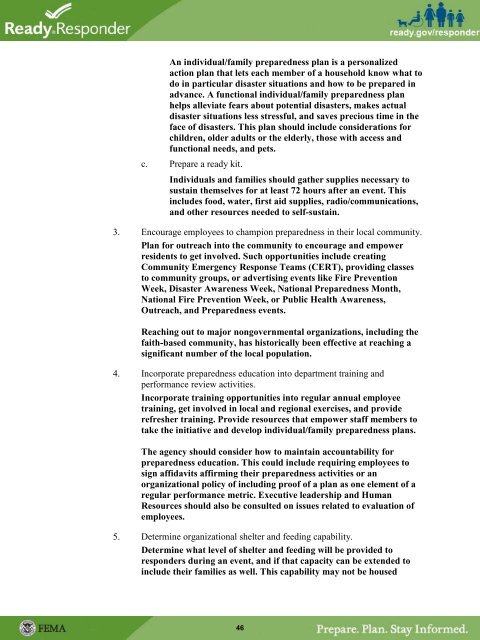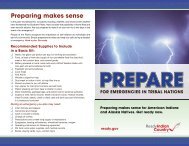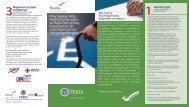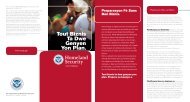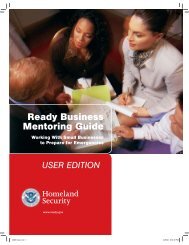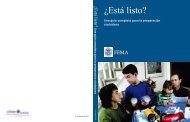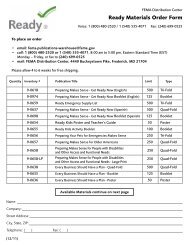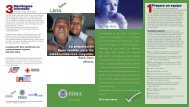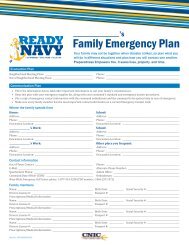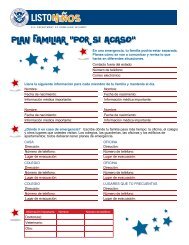Ready Responder Toolkit, Emergency Planning for First ... - Ready.gov
Ready Responder Toolkit, Emergency Planning for First ... - Ready.gov
Ready Responder Toolkit, Emergency Planning for First ... - Ready.gov
Create successful ePaper yourself
Turn your PDF publications into a flip-book with our unique Google optimized e-Paper software.
An individual/family preparedness plan is a personalized<br />
action plan that lets each member of a household know what to<br />
do in particular disaster situations and how to be prepared in<br />
advance. A functional individual/family preparedness plan<br />
helps alleviate fears about potential disasters, makes actual<br />
disaster situations less stressful, and saves precious time in the<br />
face of disasters. This plan should include considerations <strong>for</strong><br />
children, older adults or the elderly, those with access and<br />
functional needs, and pets.<br />
c. Prepare a ready kit.<br />
Individuals and families should gather supplies necessary to<br />
sustain themselves <strong>for</strong> at least 72 hours after an event. This<br />
includes food, water, first aid supplies, radio/communications,<br />
and other resources needed to self-sustain.<br />
3. Encourage employees to champion preparedness in their local community.<br />
Plan <strong>for</strong> outreach into the community to encourage and empower<br />
residents to get involved. Such opportunities include creating<br />
Community <strong>Emergency</strong> Response Teams (CERT), providing classes<br />
to community groups, or advertising events like Fire Prevention<br />
Week, Disaster Awareness Week, National Preparedness Month,<br />
National Fire Prevention Week, or Public Health Awareness,<br />
Outreach, and Preparedness events.<br />
Reaching out to major non<strong>gov</strong>ernmental organizations, including the<br />
faith-based community, has historically been effective at reaching a<br />
significant number of the local population.<br />
4. Incorporate preparedness education into department training and<br />
per<strong>for</strong>mance review activities.<br />
Incorporate training opportunities into regular annual employee<br />
training, get involved in local and regional exercises, and provide<br />
refresher training. Provide resources that empower staff members to<br />
take the initiative and develop individual/family preparedness plans.<br />
The agency should consider how to maintain accountability <strong>for</strong><br />
preparedness education. This could include requiring employees to<br />
sign affidavits affirming their preparedness activities or an<br />
organizational policy of including proof of a plan as one element of a<br />
regular per<strong>for</strong>mance metric. Executive leadership and Human<br />
Resources should also be consulted on issues related to evaluation of<br />
employees.<br />
5. Determine organizational shelter and feeding capability.<br />
Determine what level of shelter and feeding will be provided to<br />
responders during an event, and if that capacity can be extended to<br />
include their families as well. This capability may not be housed<br />
46


